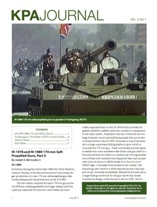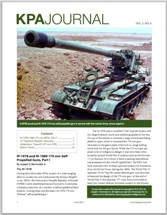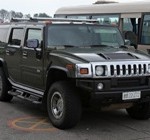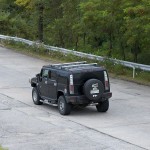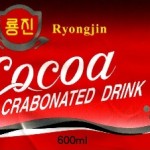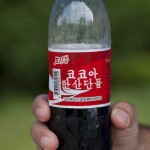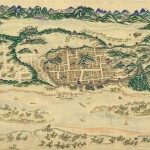UPDATE 3 (2011-11-3): According to the Daily NK:
Following September’s mass censure of more than thirty Party cadres in North Pyongan Province and Shinuiju, sources have informed Daily NK of an additional investigation leading to at least five executions and one suicide in a fishing region of the province.
According to the sources, the investigation was concentrated Unjong Village on the island of Shinmi, part of Seoncheon County around 70km south east of Shinuiju City [See in Google Maps here].
According to one of the sources, “On the 28th of last month they gathered provincial Party cadres and trading organ workers at Seoncheon Hall [See in Google Maps here] to report the inspection results and strengthen solidarity.”
The source gave more detail, saying, “They said they shot the head of the unit, his vice (female; 39), the captain of a clam fishing vessel, the local Party secretary responsible for food distribution and the head of Unjong Village cooperative farm, firing sixty bullets into each person at the shooting range of Seoncheon County Chosun People’s Army Base.”
The head of the fishing unit was executed on suspicion of having embezzled $60,000 and shifted it to a bank in China, the source explained.
“Aside from the execution of those five people, the local chief prosecutor then committed suicide,” the source went on. “The head of the local NSA and ten cadres were also dismissed.” The source also noted that the incident led to the dismissal of at least one provincial Party secretary.
While the investigation was ongoing the adopted daughter of the head of Unjong Village cooperative farm apparently even tried to hide the head of the fishing team in their family home so as to conceal her own father’s misconduct, but ended up in detention herself as a result.
According to the sources, the investigation was conducted by agents sent not from Pyongyang but from North Hamkyung Province, and as the shockwave of the devastation in Seoncheon County spread up to the provincial Party level, this fact began to cause regionalism to flare.
One of the sources explained, “The inspection team from North Hamkyung Province had no love for that place and they punished everyone one-by-one, so the incident got bigger. I have no idea where they will destroy next.”
This was apparently done so that the work could be driven forward by that regionalism, but also so its planners in Pyongyang could avoid complaint. This is not uncommon on the Korean Peninsula; indeed, in South Korea under military dictatorship units were frequently dispatched to other parts of the country to quell disturbances.
Elsewhere during the Seoncheon Hall meeting, the fates of key people in the original purge of North Pyongan Province (as previously reported by Daily NK) were also reported;
Kim Yoon Ho, the provincial guidance department head, was exiled to Dongrim County on charges of illegally mobilizing farm workers. However, his case is now under review thanks to the intervention of the provincial Party Chief Secretary.
Kim Cheol Ho (son of candidate member of the Politburo and head of the Party Cadres Department Kim Pyeong Hae, and Shinuiju municipal guidance head) was exiled to Dongchang County.
Local People’s Committee Chairman Park Cheon Geun was demoted.
The secretary of Wonlim, a marine products enterprise, was sent to Changson County on charges of embezzling $2,000.
However, Kim Jae Hwa, a Supreme People’s Assembly delegate and Shinuiju city commercial director, only received a light punishment from the Party even though he stole 70 tons of beans from the state.
UPDATE 2 (2011-10-4): According to the Daily NK:
The Daily NK has learned that the recent mass purge of more than 30 cadres from the provincial and municipal arms of the Party in North Pyongan Province and Shinuiju City came about as part of efforts to help bed in the Kim Jong Eun era while aiding new provincial Party Chief Secretary Lee Man Geon in taking hold of provincial affairs.
3 of the top 10 figures in the North Pyongan Province Party hierarchy were among those swept away in the purge at the start of last month, including the provincial Party propaganda and guidance heads and figures from within the security apparatus.
Lee, who reportedly led the purge, rose to his current position as a result of the promotion of predecessor Kim Pyeong Hae to a central Party post at the Chosun Workers’ Party Delegates’ Conference in September, 2010
However, it appears that, partly because Kim had been promoted rather than removed, Lee struggled for almost a year to seize control of the provincial levers of power. Accordingly, the current assessment from inside North Korea is that Lee, with the backing of Kim Jong Eun, launched a power struggle to liquidate the Kim Pyeong Hae faction.
One source explained more today, saying, “On July 6th, a ‘gruppa’ from the central Party accompanied the General on an onsite inspection in Shinuiju, and they did some extensive vetting of provincial and city cadres. At that time, Chief Secretary Lee Man Geon joined with the Kim Jong Eun faction and set about sorting them out on charges of corruption.”
“Lee Man Geon read Kim Jong Eun’s mind and, so as to implant the successor’s faction, actively pursued charges of corruption against the cadres then kicked them out,” the source went on.
Meanwhile, Kim Pyeong Hae, who had become a candidate member of the Politburo and the head of the Party Cadres Department, also appears to have stopped work for the time being.
According to the source, “Kim Pyeong Hae was stopped from working in the middle of September. His second son Kim Gyeong Ho (former guidance head for the Shinuiju municipal Party) also lost his job; this really surprised Shinuiju cadres.”
Kim Pyeong Hae has not been seen in public since September 12th, after appearing on name lists at public events every day from the 8th until that time. That does not mean that Kim has been removed permanently, it is too early to say that, but it does appear that he may have been taken out of the front line for the time being.
UPDATE 1 (2011-9-27): According to the Daily NK:
The removal of more than 30 cadres in North Pyongan Province represents an anticipated shift in the provincial power structure for the purpose of establishing the Kim Jong Eun leadership structure. Branding existing cadres as corrupt, removing them and transfusing in fresh blood are all part of the liquidation and reformation work of the Kim Jong Eun era.
Although unsurprising in itself, the ‘purge of North Pyongan’ has, however, exceeded expectations in terms of target and scale. Everyone knew that Kim Jong Eun, having guaranteed the loyalty of organs of state security, had begun to work on the Party apparatus, but that he would do so in such a lightning fast and apparently violent manner did come as a surprise.
More than 30 cadres have been dismissed, including the North Pyongan Province propaganda secretary and Guidance Department head. The two, in addition to the head of workers’ unions in the province, were among the ten most powerful Party figures in the whole region. In particular, the head of the Guidance Department could be called the yoke at the core of the egg of provincial Party operations.
But slicing off limbs in this way, only one year after the former North Pyongan Province Party secretary was himself replaced by Lee Man Geon, offers a warning; show absolute loyalty to Kim Jong Eun.
As the second-in-command in practice, Kim has been dealing out cadre changes at higher levels since 2009. This has included inflicting retirement on Kim Young Joo, Kim Il Cheol and more, while rapidly elevating people like Lee Young Ho.
The purging of the former deputy head of the National Security Agency, Ryu Kyung, was taken in much the same way when it came to light earlier this year; namely as a part of the establishment of the succession system.
It was thus to be expected that having changed much of the central structure via the Workers’ Party Delegates’ Conference last year, Kim would begin to realize changes in the provincial structure. Kim is now doing so, exercising his oversight powers via the central Party guidance structure and purging corrupt cadres.
“He can take away from this the ‘effect of a domestic crackdown’, namely the atmosphere of loyalty it creates, and the ‘effect of change’, namely the ability to plant his own younger people by cutting people for being corrupt,” explained Cheong Seong Chang of the Sejong Institute to The Daily NK today.
Such processes are rather common in dictatorships, and this is far from being the first time such events have unfolded in North Korea, either. Various corruption incidents ‘came to light’ during the March of Tribulation in the 1990s, used by Kim Jong Il to quiet complaints about the leadership in Pyongyang.
“Kim Jong Il regularly dismissed people, to both turn people’s anger at the leadership onto the mid-level cadres and at the same time evade responsibility for anything by suggesting that it was mid-level bribery that was precluding the people’s economy from improving,” according to Cheong.
In 1999, for example, there was the simultaneous purging of a number of figures from Yangkang Province, including the provincial Party general secretary and NSA secretary, Unheung County secretary and the political commissar for the No. 376 Unit of the Chosun People’s Army.
The provincial general secretary was dismissed on the premise that he had failed to prevent the rapid influx of ‘capitalist culture’ across the Sino-North Korean border, the NSA man because he had embezzled Party funds, and the Unheung County secretary and political commissar because they had taken bribes. All were subsequently executed, as is also often the case.
ORIGINAL POST (2011-9-26): According to the Daily NK:
The punishment of more than thirty officials from Party organs in North Pyongan Province is sending shockwaves through the national Party apparatus.
A number of sources within North Korea have confirmed the news in conversation with The Daily NK in the last few days, saying that the situation began to unfold at the beginning of this month and that the individuals were nominally singled out due to corruption.
The recent purge reportedly includes:
▲ Dismissal and loss of all privileges for the head of the provincial Guidance Department
▲ Sacking for the provincial propaganda secretary, as well as the head of the workers’ union and department responsible for power supply
▲ Demotion for the head of the Shinuiju People’s Assembly
▲ Sacking for the head of the city’s security forces and more than ten other city cadres
▲ Internal punishment for more than ten other party officials
A source from Sinuiju said “The dismissal of the propaganda secretary and head of the Guidance Department, people who are effectively in charge of the provincial party, as well as the removal of the municipal People’s Assembly chairman, all within a few days of one another, has left Shinuiju cadres in shock.”
The dismissed propaganda secretary was effectively the third most powerful cadre in North Pyongan Province, a man whose principal responsibilities include overseeing the idolization of the Kim family and the political education of the people, while the head of the Guidance Department and the workers’ union were effectively the 4th and 10th most powerful. As the main figure in the provincial Party Assembly, the head of the Guidance Department also had oversight powers over the chief secretary and organizing secretary. The appointment of all the dismissed officials falls under the direct jurisdiction of the Central Party Guidance Department.
Thus, the majority of defectors believe it implausible that the Party would punish so many heavyweight figures for corruption at once, even with the storm trooper inspections of a month ago as a catalyst.
Vice-President of Radio Free Chosun, Jang Sung Moo agreed, telling The Daily NK today, “It is highly unlikely that the authorities would get rid of the third, fourth and tenth most powerful figures in North Pyongan Province just for corruption. There is a good chance that there will be further charges down the track regarding other matters; espionage for example. That’s the only way ordinary people will be able to grasp it.”
South Korean intelligence agencies are already aware of the high profile sackings.
The highly irregular events in North Pyongan Province have caused consternation in other regions as well, sources say. According to one, “The numerous sackings of important cadres has left other cadres worried. Many of them can’t understand why their colleagues are being replaced all of a sudden.”
Interestingly, one of the dismissed cadres, the now ex-head of Shinuiju’s Guidance Department, is former North Pyongan Province Chief Secretary Kim Pyeong Hye’s son. Kim is regarded as one of Kim Jong Il’s closest associates after being promoted to the head of the Party Cadres Department at last year’s Workers’ Party Delegates’ Conference. Thus, many people find it unlikely, at best, that corruption would be enough to bring down the son of one of Kim Jong Il’s trusted associates.
Accordingly, the purge could be a part of plans to facilitate Kim Jong Eun’s seizure of control of the Party. It is generally accepted that his takeover of the security forces is mostly complete, and instilling a measure of fear in the provincial elite is one method Kim is now likely to employ to help cement his grip.
Read the full stories here:
North Pyongan Party Cut Down to Size
Daily NK
Lee Seok Young
2011-9-26

